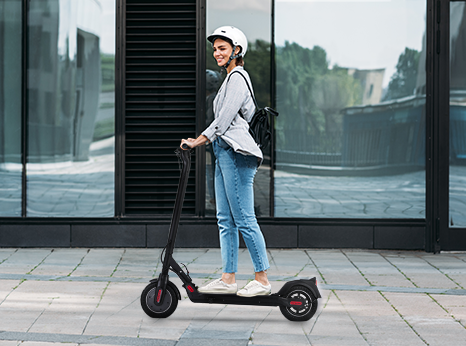Electric scooters have become increasingly popular in recent years as a convenient and eco-friendly mode of transportation. In this article, we will delve into the mechanics and technology behind these innovative vehicles, exploring how they work and the advancements that have been made in the industry.
The Basics of Electric Scooters
Electric scooters, also known as e-scooters, are powered by an electric motor instead of a traditional internal combustion engine. They are typically equipped with a rechargeable battery that provides the necessary energy to propel the scooter forward. The battery is connected to the motor, which drives the wheels and allows the scooter to move.
One of the key components of an electric scooter is the controller. The controller acts as the brain of the scooter, regulating the flow of electricity from the battery to the motor. It receives input from the throttle, which is controlled by the rider, and adjusts the power output accordingly. This allows the rider to control the speed of the scooter.
The Advancements in Electric Scooter Technology
Over the years, there have been significant advancements in the technology used in electric scooters. One notable development is the use of regenerative braking systems. These systems allow the scooter to recover energy while braking, which is then stored in the battery for later use. This not only increases the scooter's range but also improves its overall efficiency.
Another important advancement is the integration of smart features into electric scooters. Many modern scooters are equipped with built-in GPS systems, allowing riders to track their location and plan their routes more effectively. Some scooters also come with smartphone apps that provide additional functionalities, such as locking and unlocking the scooter remotely or adjusting the scooter's settings.
The Mechanics Behind Electric Scooter Performance
When it comes to performance, several factors come into play in electric scooters. The power of the motor, measured in watts, determines how fast the scooter can go. A higher wattage motor will provide more power and allow for higher speeds. The capacity of the battery, measured in ampere-hours (Ah), affects the scooter's range. A larger battery capacity will enable the scooter to travel longer distances on a single charge.
The weight of the scooter also plays a role in its performance. Lighter scooters tend to be more agile and have better acceleration, while heavier scooters may have a higher top speed but slower acceleration. The type of tires used can also impact performance. Pneumatic tires provide better shock absorption and a smoother ride, while solid tires are more puncture-resistant but offer a less comfortable experience.
The Future of Electric Scooters
The electric scooter industry is constantly evolving, with new innovations and technologies being introduced regularly. One area of focus is battery technology, with researchers working on developing more efficient and longer-lasting batteries. This would significantly improve the range and overall performance of electric scooters.
Another area of development is the integration of artificial intelligence (AI) into electric scooters. AI-powered scooters could analyze data in real-time, allowing for more efficient route planning and optimizing energy consumption. They could also enhance safety by detecting potential hazards and alerting the rider.
In conclusion, electric scooters have come a long way in terms of mechanics and technology. From the basics of how they work to the advancements that have been made, these vehicles offer a convenient and sustainable mode of transportation. With ongoing research and development, we can expect even more exciting innovations in the future.
